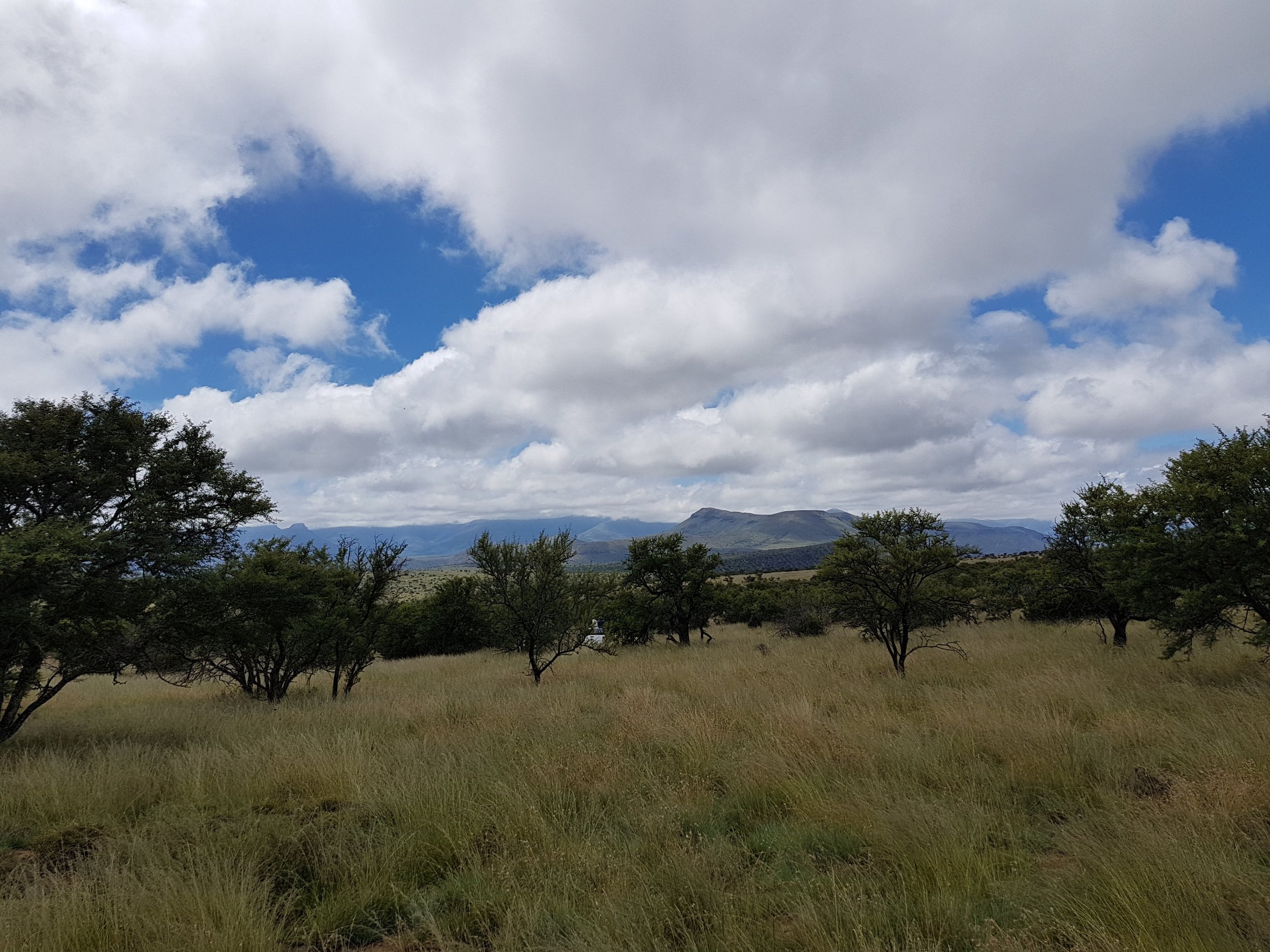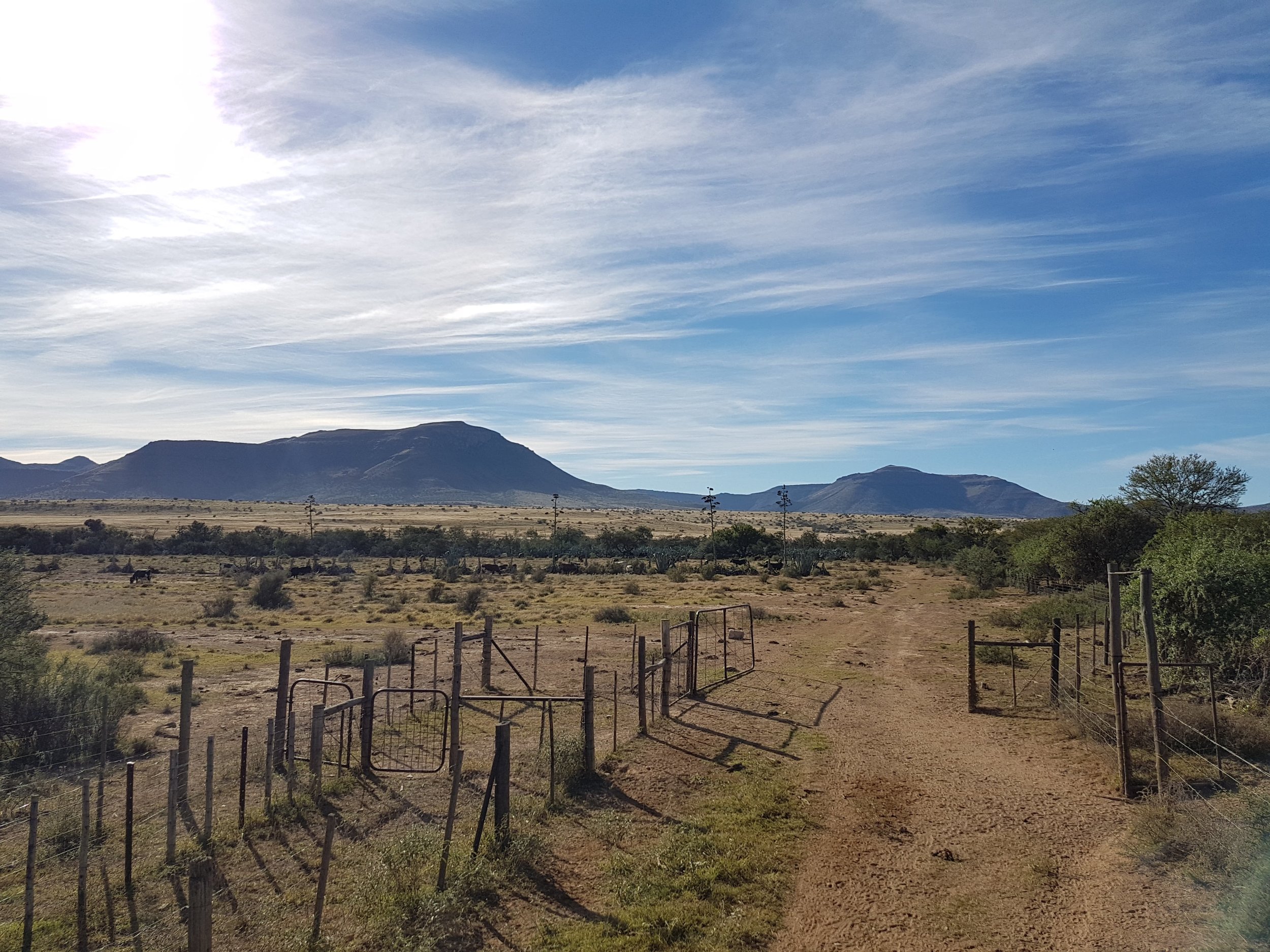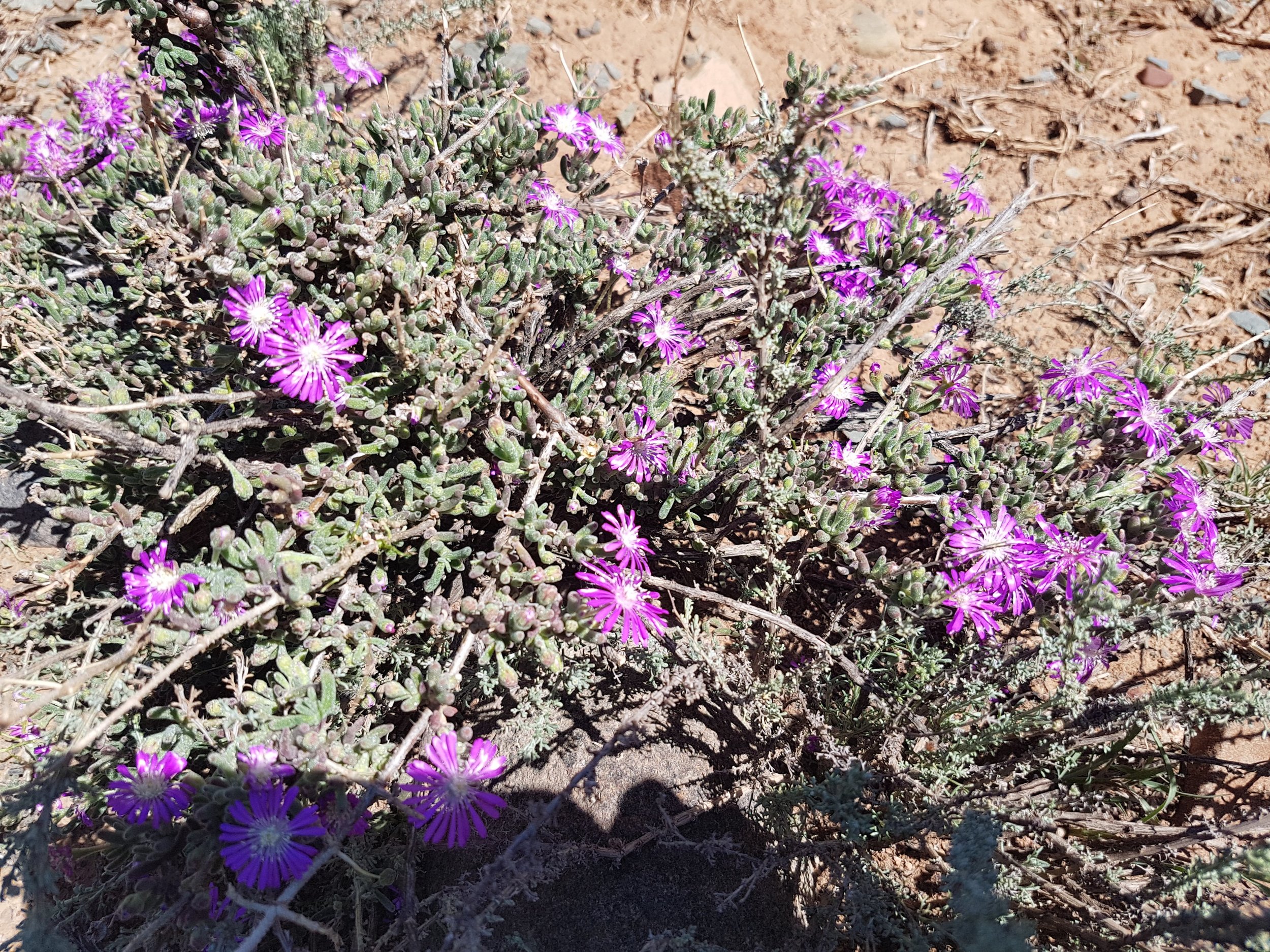By Gordon Wright author of Farm to Fork and Karoo Food
Lamb is the crème de la crème of all the meats from the Karoo and people visit from all over the world to taste it.
As a chef, I love cooking lamb, from shanks and stews to roasts with whole cloves of garlic pressed into the flesh. They say the nicest meat is closest to the bone, an ethos I wholly subscribe to and a Karoo lamb neck, slow-roasted in the oven or in a kettle braai is such a treat. Sticky lamb ribs are an all-time hit too and no holiday trip would be complete without a lamb and mint pie as padkos (food for the journey).
But first let’s clear up a few misconceptions regarding lamb. You will note that the heading of this article refers to lamb and mutton. Although people tend to refer to both as lamb, there is quite a big difference.
In the Karoo, lamb tends to be exactly that: a young sheep roughly 1 year old with less than two teeth (twee tand as they say locally) and weighing around 40 kg (live weight ). It is graded A or AB, with a classification number of 1 to 6 (with 1 being very thin and miserable, and 6 being really fatty). I use grade AB 2 or 3, which I consider the best grade lamb, as it comes from a young, fairly well developed animal with a 4–5 mm layer of fat and good meat to bone ratio, i.e. not too much bone and good meat coverage. Mutton comes from an animal older than 1 year, that is larger than a lamb and more developed, and has 2 to 6 teeth. It falls into the B and C categories and is classed from 2 to 3. A good quality buy for mutton would be graded, for example, B 2.
Whilst lamb tends to be much tenderer than mutton and is used by restaurateurs for their prime cuts, mutton has way more flavour but generally needs a longer cooking time. Either way it’s a compromise between tenderness and flavour, so think about what you want to do with the cut before deciding what to buy. A tender chop on the braai (barbecue) should be lamb, but mutton is the best choice for a tasty winter casserole or stew. When in doubt, ask your butcher.
I recommend you find a local butcher who is approachable and helpful and build a good relationship with him or her so that you get decent advice while at the same time supporting a local neighbourhood business.
Now that you know what to look for when buying lamb, you need to know what makes traditional Karoo lamb so special. The not so big secret about Karoo lamb and mutton is that it is raised and lives entirely out in the veld. It very seldom has any form of supplementary feeding, unlike most other livestock, and the old adage of ‘you are what you eat’ rings absolutely true.
The Karoo is situated in an arid semi-desert region which, at first glance and to the untrained eye, looks like nothing much at all. In reality, however, it is a massively rich and diverse environment that has developed over millions of years and is teeming with life. The veld itself is a rich array of shrubs, grasses, succulents and wild herbs, including various forms of wild rosemary, camphor, lavender and sage. Essentially, what all these plants have in common are high concentrations of terpenoids and other volatile oils. Plant terpenoids are used extensively for their aromatic qualities and in traditional herbal remedies.
The combination of unique plants, climate, geography and the extensive method of free range farming contributes greatly to the unique Terrior of Karoo lamb.
AH Yes, that quintessential and mystifying ingredient that no Karoo dish worth its salt could do without.
Sublime lamb or mutton from the heart of the Karoo has been the staple of Karoosters for hundreds of years and is arguably its most famous export.
Revered around the world for its flavour and free-ranging hardiness, the humble Karoo sheep is unique in all the world.
Farmed by the hardworking and humble people of the land, it is a treasure of this region that cannot be matched or equalled.
What a privilege it is to have regular access to meat of such excellent quality.
When you are working with top quality meat with a magnificent flavour all of its own, your sole job, really, as a cook, is to do it justice and, if you’re honest, to not bugger it up.
There is no need for fancy sauces and marinades to drown out or add flavours; a fresh herb or spice to enhance the existing delicious flavour is really all you need.
What truly makes Karoo lamb stand out from the rest though is the unique flavour profiles of the meat caused by what it eats and the type of free ranging life it lives.
The Humble Karoo Bush (Penzia Incana) is probably the most famous of all the Karoo plants, as eating this is what imparts the distinct flavour to the meats of the Karoo, however, this little bush is not completely dominant in all parts of the Karoo and a variety of other species and genus are also present across the vast region.
A few of the most common ones are:
Plinthus karrooicus ("Silverkaroo"), Pentzia spinescens ("Skaapbossie"), Eriocephalus ericoides ("Kapokbossie"), Salsola glabrescens ("Rivierganna") and Pteronia glauca / Rosenia humilis ("Perdebos").
Just within a 100km radius of where I live, close to the picturesque town of Graaff Reinet, are a huge variety of bushes, grasses and shrubs that have a significant impact on the flavour profiles of our lamb. The Lamb from the farms of the South and West (in terms of Graaff Reinet) eat a lot more Karoo Bush and Ganna, which gives a much stronger and more flavourful lamb, whereas the mountainous farms in the North have a lot more Rooigrass and Kapokbossie, which is responsible for the more delicate and softer flavours of the lamb and mutton from those areas. And this within a mere 60km of each other.
If you head up to the Northern Cape Karoo towards Carnarvon and Williston then you will have an altogether different taste experience due to the abundance of silverkaroo and Perdebos, to name a few. Now combine this habitat with a dry semi desert climate, hot summers and cold winters and not much rainfall with have a predominance of indigenous vegetation rather than grasses (which only grow in summer) and you have a perfect storm. One where the sheep literally flavour themselves from the inside.
Essentially, due to the extensive nature of the way traditional Karoo sheep are farmed and naturally grazed off the veld and the fact that they do not end up in a commercial feedlot and fed maize and supplements, Karoo lamb and mutton retains it’s uniqueness and wonderful flavour compared to a feedlot animal.
Unfortunately, due to commercial pressure, predators and the basic economics of the consumer not being prepared to pay a premium for premium lamb or mutton, the traditional Karoo farm in under threat and more and more sheep are being taken off the veld and stuck into commercial feedlots. The result will be a nullifying of all the good holistic farming practises and happy free range animals that have been the norm in the Karoo for hundreds of years and the introduction of mass commercial factory farms that are detrimental to the Farmer, the consumer and our planet. We really need to fight this trend and support the traditional Karoo farming methods, even if it means eating less lamb or mutton but of a much better quality.
Most of my farmer friends are lamb and mutton producers and they would much prefer to continue farming their lamb in the traditional way but they are being forced by these circumstances to change in order to keep the wolf (literally) from the door. By voting with our wallets and buying only traditionally farmed Karoo lamb we can all make the difference .
As discussed earlier, the most basic difference between lamb and mutton is age. A lamb is young, the meat is tender and it has a very delicate flavour. Perfect for braising, quick cooking or gentle roasting. Lamb is ideally served with a bit of a pink hue to it and light spicing. It is classed as A grade and commands the highest price, mainly due to its tenderness.
Mutton, on the other hand, is an older animal with a lot more flavour. It is tougher though, so it does well with lots of added spicing and longer cooking times, perfect for stewing and slow-roasting.
It is classed as either B or C grade and is usually the cheapest of the lot. A serious bargain if you are planning to do a good curry or slow roast.
In between the two is the much forgotten and seldom seen ( and often cheaper) two-tooth or hogget. This lovely compromise between lamb and mutton is both tender and flavoursome. I like to call it “the farmer’s choice” as these are the sheep they tend to be the ones they keep for home use.
The best of both worlds and my first choice every time. Hogget is easily identified at the butcher with the AB certification stamp on the carcass – you don’t see it often but if you do, grab it.
This unique combination of holistic extensive farming practice, good natural diet and lots of fresh air (Terroir) and exercise gives Karoo lamb and mutton its characteristic and unmatched flavour profile and makes it every cook’s dream to work with, as very little needs to be done in order to bring out the best flavour.
When planning your dish or braai it is important to have the correct cut or type of meat for the purpose.
A nice heavily spiced Curry will be best suited to mutton, whereas a tender chop on the grill should be Lamb.
Generally, the most tender cuts (Read – least flavourful) are the ones from muscles that don’t work that hard, loin chops, fillets etc and require the same respect as a steak – they require a very quick and minimal cooking over high heat with limited use of spices.
The more hard working cuts, shoulders, neck, shanks etc, have a lot more flavour but also require a lot more cooking time. So low and slow is the key here. The upshot is that they can carry lots of spices and flavours and are well worth the effort.
My rule of thumb with these sorts of cuts is this – “If it’s still tough, just make sure it has enough fluid, cover & cook it for longer until it want to fall off the bone – don’t rush it”
A nice hint for succulent, falling off the bone ribs is to smother in lemon juice and pre cook for 60mins in the oven at 180 Deg C. Finish off over moderate coals on the braai until the skin starts to crisp to ensure that awesome smoky, lamby taste.
It is hard to describe the flavour of Karoo sheep if you have not tasted it. It makes all feedlot lamb and mutton appear bland and boring. The head of The International Slow Food Movement, Carlo Petrini declared it “The best lamb in the world” when he tasted it on a recent visit to these fair climes.
The natural herby flavour with just a subtle whisper of Rosemary and Thyme and a hint of garlic that just begs for a lovely glass of deep red Shiraz to finish it, like two lovers in tight embrace.
That, my friends, is the Terroir of Karoo lamb and mutton and why it is a national treasure.
Gordon Wright is a Chef , author and passionate Karooster who loves to tell the occasional tale , cook a lamb chop on the braai and sip the odd glass of good wine under the Karoo sky.



